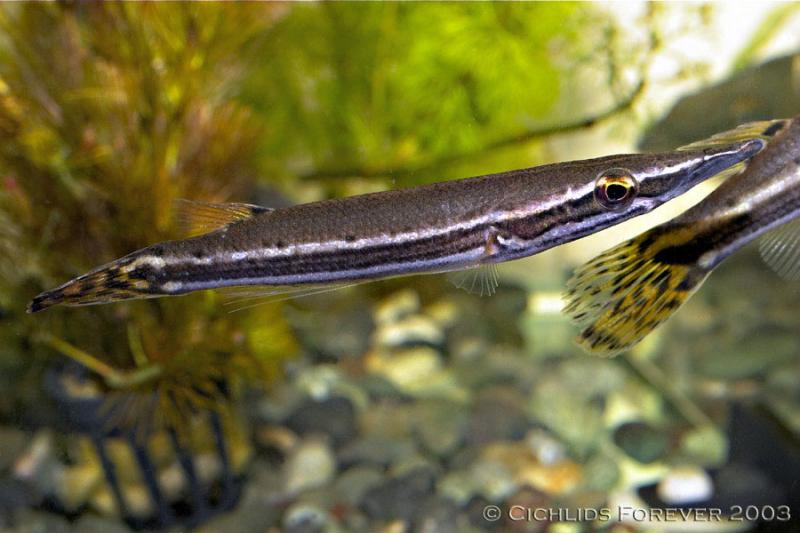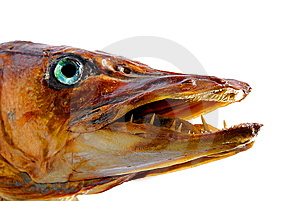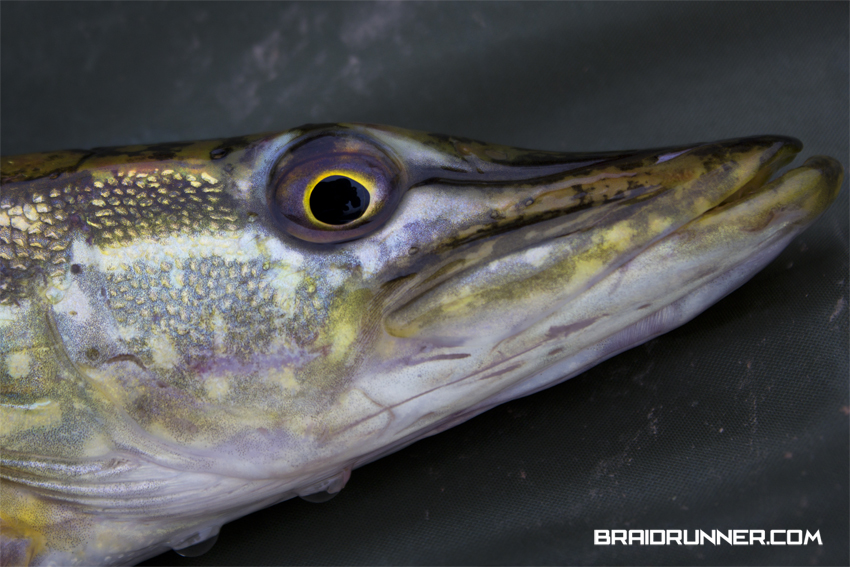
Luciocephalus pulcher
FAMILY
Osphronemidae
TAXONOMY
Diplopterus pulcher Gray, 1831, type locality not specified.
OTHER COMMON NAMES
German: Hechtkopf; Spanish: Cabeza de lucio.
PHYSICAL CHARACTERISTICS
Length 6 in (15 cm). Elongate, with large head and highly protrusible
upper jaws. Labyrinth simple. Has separate endoskeletal
ossification in front of basihyal, erroneously termed “gular
element” by some authors. Caudal fin is rounded, dorsal fin is
short with nine to 11 soft rays, anal fin with a median incisure
and 18–19 soft rays, pelvic fin with filamentously elongate first
soft ray extending to the end of the body. Color is light beige
with longitudinal dark brown bands. There are several transverse
stripes in the caudal fin that may be broken up into series
of spots. A second, undescribed species from Sumatra and Borneo
has numerous green iridescent spots along the body.
DISTRIBUTION
Malay Peninsula, Sumatra, and Borneo.
HABITAT
Smaller streams with acidic to highly acidic (down to a pH of
3.5) water; often caught among aquatic vegetation.
BEHAVIOR
The pikehead can protrude its upper jaw to about 33% of the
head length, which is quite exceptional among teleosts. In captivity
usually remains hidden among vegetation, from where it
moves slowly toward prey. At a certain distance of around 3.9
in (10 cm), it makes a sudden rapid lunge (with a peak velocity
of 150 cm/s-1 and a duration of 0.03 sec.) to surround the prey
by protruding its upper jaws and expanding its huge mouth
cavity. Suction seems to play only a minor role in capturing
the prey.
FEEDING ECOLOGY AND DIET
Appears to feed exclusively on small fishes.
REPRODUCTIVE BIOLOGY
Mouth brooder with male parental care. Male defends territory
around spawning site. Displays conspicuous sexually dichromatic
coloration only during courtship and spawning. Mating
with a reduced spawning clasp takes place at the bottom. All
eggs are released during a single spawning bout, sink to the
bottom, and are taken up into the male’s mouth. The male
mouth broods up to 150 eggs with a diameter of around 0.12
in (3 mm) for about four weeks. Eggs are pear-shaped, with a
striking pattern of parallel surface ridges leading toward the
micropyle (a preformed opening, the only place where sperm
can enter the egg), where the ridges end in a counterclockwise
spiral. This unique surface pattern also occurs in the genera
Parasphaerichthys, Ctenops, and Sphaerichthys, demonstrating the
close relationship of the four groups. Egg surface pattern may
represent a sperm guiding device to enhance fertilization success.
Upon release from the male’s mouth, young pike-heads
already measure 0.6 in (1.5 cm) long.
CONSERVATION STATUS
The species is not threatened or endangered, but may suffer in
the future from habitats destruction.
SIGNIFICANCE TO HUMANS
Ornamental fish for specialized hobbyists.
Other popular Animals
Photo Gallery of - Pikehead





 Animalia Life
Animalia Life